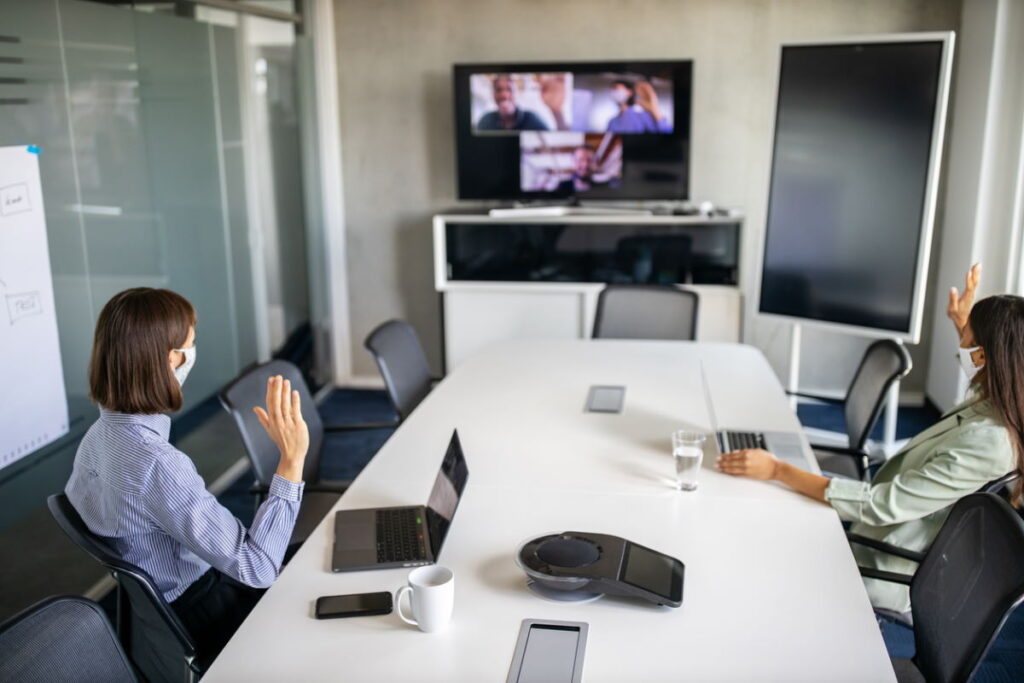Paul Clark at audio and video technology solutions provider Poly, explores how technology is at the centre of plans to support organisations as they transition into hybrid work.
Technology helped many of us cope with the worst effects of the pandemic. Now it’s at the centre of plans to support organisations as they transition out of lockdowns and into hybrid work, bringing part of their workforce back to the office.
This will be a post-pandemic world of work very different from the one that preceded it. It will also be a bigger change in our everyday working life compared to the one we experienced in early 2020 when the majority of office workers had to adopt the remote working model.
Organisations that succeed with this next stage of welcoming employees back to the office will be the ones who understand their workers in all their different behavioural guises—and provide the tools they need to stay healthy, productive and motivated, whether they decide to work from home, the office or elsewhere.
Back to work?
The past year and a half for businesses has been one characterised by uncertainty and risk-taking. The epic shift in hybrid working practices in early 2020 ended up with nearly 47% of those in employment doing at least some work from home, rising to well over half (57%) in London.
Despite a surge in cyber-threats which capitalised on gaps in corporate protection for remote workers, and the reluctance of employers to trust teams to work outside of the office, fearing a negative impact on their productivity, the whole exercise has been remarkably successful. Now UK organisations are in the process of its second great workplace experiment as employees are encouraged to come back into offices.
Most will choose to minimise health risk with a hybrid set-up, where staff are allowed to work-from-home (WFH) for a number of days and come in for the remainder of the week. In so doing, employers are trying to balance multiple conflicting demands. Remote working was an unusual practice across many industry sectors, despite employees having the legal right to request flexible working.
Before the pandemic only a handful (10%) of the workforce was working outside the corporate office. A global Microsoft study also found that although nearly three-quarters (73%) of workers wanted flexible working options to stay, over two-thirds (67%) said they wanted more in-person work post-pandemic. Many of the latter tend to be younger employees who are less worried about the health implications of commuting, are less likely to have young families at home, and feel a greater need to be in the office to learn from their managers and other senior colleagues.
As a result, nearly 50 of the UK’s biggest employers, covering over one million workers, say they’re embracing a hybrid work future. Despite the UK’s relatively high vaccination rates, many more will surely follow over the coming weeks. All-told, over 60% of western European organisations have said they’ll keep some WFH policies once the pandemic recedes.
The right stuff
Hybrid working is the future. It offers a useful compromise to keep the best-of-both-worlds with both home and office-based work. It enables employers to reoccupy expensive city-centre real estate. And it will help allay concerns that, without face-to-face collaboration, productivity or innovation may suffer. But to offer the most effective, productivity enhancing technology for this new reality, employers must first understand their staff.
The truth is that segmenting employees by role simply doesn’t work. There are often workers in the same role, sometimes with the same job title, who have different behavioural workstyles that affect how and when they use technology. Understanding the differences between these personas can help save time and money and ultimately increase productivity in the months and years ahead.
A tech-savvy executive who uses video calls several times a day may value seamless connectivity across devices and features which minimise interruptions and unpredictable background noise, for example. On the other hand, a “road warrior” who spends more than 50% of their time out of the office might find unreliable connectivity their biggest pain point. They’re likely to value highly portable, easy-to-use devices.
Know your audience
Once you’ve segmented and understood the requirements of your different employee personas, it’s time to see what’s on offer. Staff don’t want makeshift solutions which end up forcing them to shout into their laptops on conference calls. They want to look and sound their best at all times, with professional-grade webcams, video bars, speakerphones and all-in-one videoconferencing monitors.
Just as important is ensuring all workers get the same quality of experience, wherever they spend most of their working hours.
Don’t forget hygiene when choosing new hybrid working kit. Low-touch gadgets and voice-based technologies can help to limit contact with shared screens and surfaces, as will feature cameras with automatic speaker tracking and split screen functionality.
Also take time out to consider how to repurpose office space: perhaps turning pokey huddle rooms into single-person spaces for private calls, equipped with HD video bars or smart speakerphones. Larger meeting rooms can be used to host small groups, with video bars featuring auto camera framing so individuals can move about the room.
AI and machine learning is also making a big impact in this space, producing TV quality video images that follow the action inside a meeting room and make tiny adjustments to key settings automatically. The same intelligence can eliminate background noise such as noisy typing or crisp packet rustling, providing remote participants with an experience that’s “even better” than being there.
Avoid tech overload
In many ways “work” is now no longer a place. So, the best way to future-proof your business is to understand the people who perform it. Productivity may not have slumped during the pandemic, but many workers feel exhausted. Weekly meeting time has more than doubled for Microsoft Teams users and is still rising.
So whatever technology you decide to empower employees with, ensure it’s accompanied by a new focus on reducing digital exhaustion, and a culture where breaks between meetings are encouraged. If not, talent may say a speedy farewell.
The new post-pandemic future is one far more accepting of remote work. That offers tremendous new opportunities for your business. But it could also mean many unhappy workers will soon be on the move unless you take better care of them.
Paul Clark is Senior Vice President, EMEA at Poly
Main image courtesy of iStockPhoto.com



